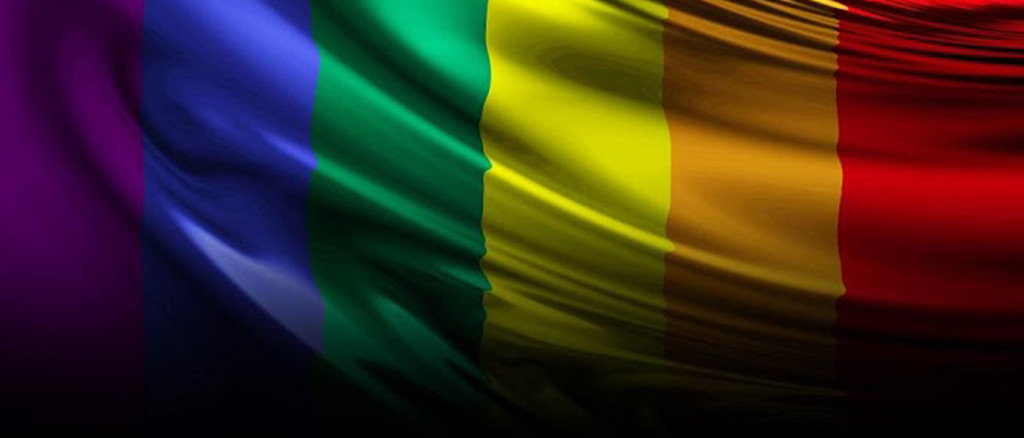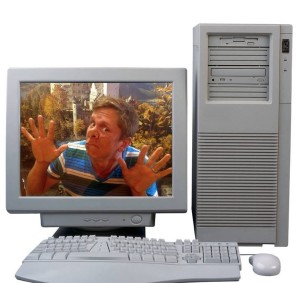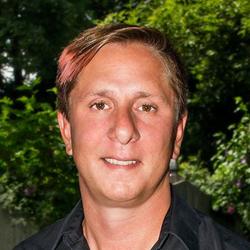The pink triangle first appeared in Nazi Germany as a prisoner marking used in Hitler’s concentration camps during WWII. The triangles were fabric badges sewn onto one’s outer garments, color categorizing inmates by “kind.”
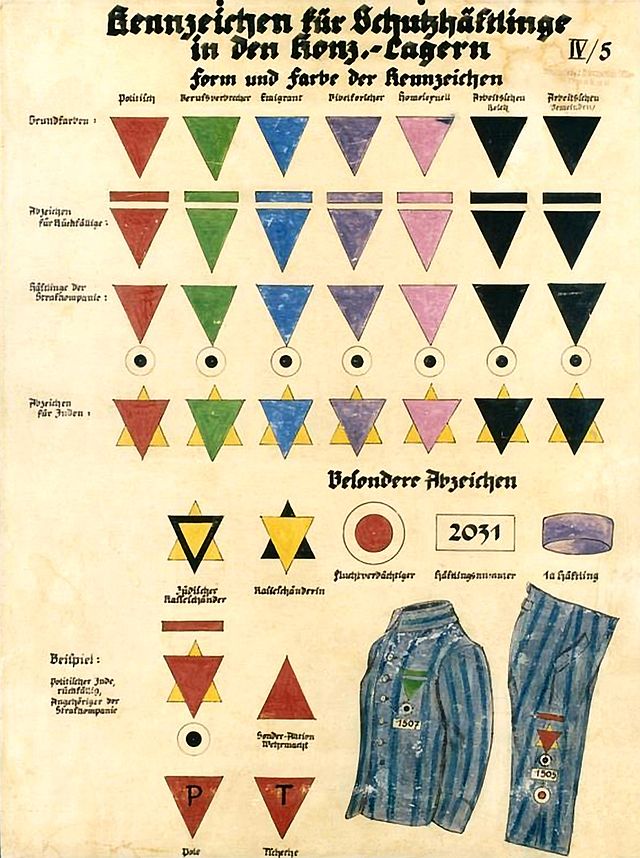
The pink triangle was given to gay men, the black triangle to lesbians.
When the Allies defeated the Nazi regime the political and remaining Jewish prisoners were released from the camps – but due to Paragraph 175 – a law imposed by the Nazi’s forbidding “unnatural sex acts committed between persons of male sex” – the homosexual prisoners watched helplessly as their fellow inmates were released.
Homosexuals remained imprisoned for 24 years following the demise of Hitler’s regime, until 1969 when the law was finally repealed.
Reclaimed as symbols of pride and solidarity for the LGBTQ community (lesbian, gay, bisexual, transgender, questioning), the dark history of the triangle patches made way for a global icon born in 1978 and debuted that same year during the San Francisco Gay and Lesbian Freedom Day Parade:
The rainbow flag
Created by vexillographer and artist Gilbert Baker, oftentimes referred to as the “Gay Betsy Ross” and originally from Kansas (just like Dorothy Gale), the rainbow flag has become the most recognizable representation of the LGBTQ community.
I spoke with Gilbert Baker for the Syracuse New Times about the rainbow flag, it’s meaning and history.
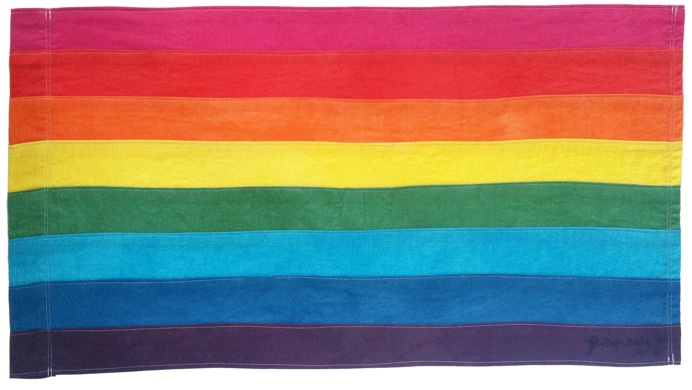
Source: gilbertbaker.com
“They’re two separate symbols.” Baker replied when asked about the difference between the two icons. “The reason I made the rainbow flag is because we didn’t have a flag. The pink triangle is not a flag – it’s a stigma put on us by Hitler. No thank you. We needed something joyful, we needed something with soul, something that was living, something positive.”
After being honorably discharged from the Army in 1972, Baker landed in San Francisco at the start of the gay liberation movement and taught himself to sew. Friends with Harvey Milk (a civil rights activist and the first openly gay elected official, assassinated Nov. 27, 1978) Baker made banners for gay and anti-war protest marches.
“I learned a lot from those people. It was a movement, everybody pitching in to do what we could. My particular skill, sewing, was very handy because we had protest marches, we needed banners, we needed a way to take our message and make it really visible and in your face.”
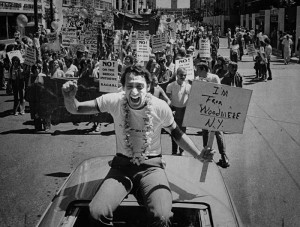
Photo: Terry Schmitt, SF Chronicle
Reflecting on the inspiration for the rainbow flag, Baker described the scene: “Through knowing Harvey, this would be really useful for visibility. This was a way for us to come out en masse, symbolically if you will. As the ’78 parade came around I was very involved in making and designing stuff, and I thought, ‘I’ll make a flag’ – and once I decided that a flag was something that would be useful and something that I would make, I knew right away to make a rainbow flag.”
Volunteers helped create the first two flags for the parade.
“We hand-dyed the fabric, so it was very organic. I sewed it in the Gay Community Center in this little gallery up there, and many, many people were involved. We ironed a thousand yards of fabric, it was a mess. I didn’t have a flag shop like I have now. It was a wonderous, beautiful, organic moment.”
At its debut during the parade on June 25, 1978, Baker knew it was a phenomenon.
“I knew right away. It was unbelievable. It was one of my dreams, right at that moment. When it first went up in the sky, I went, ‘Oh my God.’ It changed my life forever. And I knew that I was going to spend my life working on it.”
The original flags were comprised of eight stripes, each color holding a particular meaning.
“A flag has to have certain gravitas to it. The colors are always the first thing you think of when you look at a flag,” said Baker.
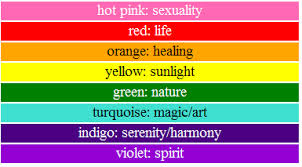
“That’s part of having a flag, is the depth in its symbolism. It’s a natural flag. The rainbow is in the sky. It didn’t need to be a word, it didn’t need to be explained very far, it would work in every language.”
Over the years, the flag has evolved.
After the death of Harvey Milk demand for the flag grew so much that Baker dispensed San Francisco’s supply of hot pink fabric and was forced to drop the hot pink stripe from the flag.
Modified again in 1979 when the flag was hung vertically from posts on San Francisco’s Market Street, the center stripe became obscured, Baker said. In order to rectify this design challenge, changing the flag to an even number of stripes could only be accomplished by removing the turquoise stripe.
Later, the indigo was changed to blue. Baker took a job at the Paramount Flag Company in 1979.
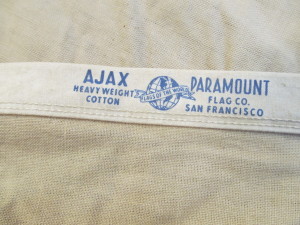
“I worked in the flag industry to get help because I didn’t have any money. I needed a way to produce it and manufacture it and make it available to people around the world, and that took a long time and is still evolving.”
Baker was commissioned to design flags for formal civic and state events, as well, creating displays for the premier of China, the king of Spain and the presidents of France, Venezuela, Philippines, among many others. While Baker has many prestigious credits to his name, he has never stopped making the rainbow flag. “I’m fully committed, I never stopped making it, since I started I’ve never stopped.”
In 1986, the rainbow flag became an official flag by the International Flag Association.
Things got rolling for the flag once more in 1988 as it came into national focus when John Stout, of West Hollywood, California, sued his landlords and won for the right to display a rainbow flag on his apartment balcony, and from there the flag continued to wave.
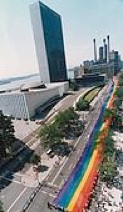
In 1994, Baker moved to New York City after creating a mile-long flag for the 25th anniversary of the Stonewall riots. While Baker holds the Guinness World Record for the largest flag in the world, the struggles of an artist are a constant. “I was starving. I had done everything, I had made a great career, but I never made money. And I knew that if I was really going to be taken seriously as an artist, and not just some crazed hippie drag queen making flags, I had to go to New York. The same reason I was in San Francisco to be a gay activist in the ’70’s.”
In 2003, Baker broke his own world record for the largest flag creating one that stretched sea to sea from the Gulf of Mexico to the Atlantic Ocean in Key West. (gilbertbaker.com)
Baker’s work as a flag maker takes him throughout the world. The artist also works in other mediums, as well “I make beautiful maps. On my website you can look at some of my art; my maps are stunning. I make other flags, I make paintings.”
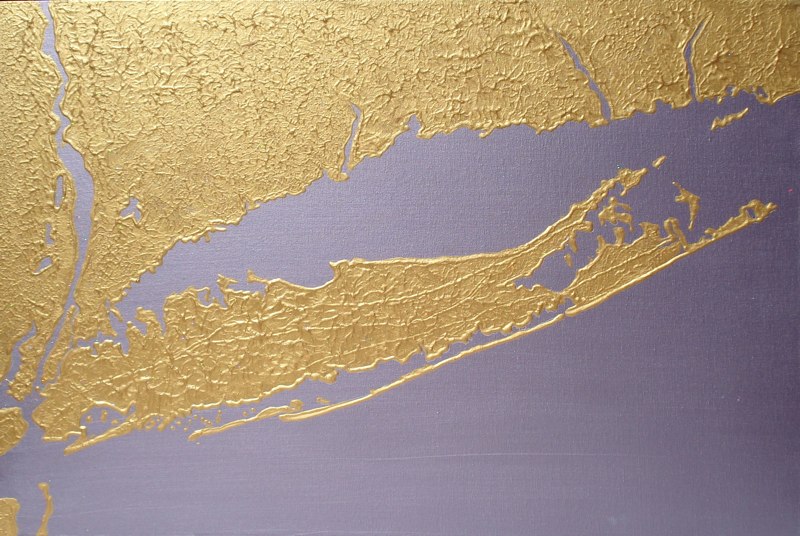
24 x 36 – gilbertbaker.com
Collectors can visit Baker’s website to purchase hand-made Gilbert Baker flags in the original colors, cotton and dyes. Although a bit pricey, listed at $3,500 each, the rainbow flag remains in the public domain, and Baker suffers from the same fate of many living artists. “You can go to Amazon and buy a flag for two bucks. As a commodity, it took off. Once people knew there was money there, my little endeavor in San Francisco, even with Paramount Flag Company, was very small and basically I can’t compete. How do I go against that?”
A signifier to the importance of localism and supporting living artists, Baker reminds us, that there is still work to be done to the world he helped forge with fellow activists in the ’70s.
One of his “nightmares” describes a “poor lesbian working in a Chinese prison factory churning out rainbow beads for queens to throw off floats in a parade she will never go to.”
A more affordable option for art supporters and rainbow collectors are Baker’s individually hand-painted, signed and numbered acrylic on canvas miniatures also offered on his website.
While reflecting on his contribution towards LGBTQ rights and equality, I asked Baker what his thoughts were about today’s LGBTQ youth, and what they might take away from gay history.
“I mean we were running around with staple guns and flyers and phone trees. The communication tools are so far beyond anything we had. They did not have to spend their time fending off the police as we did, but I think they’re more informed than everybody gives them credit for. The youth is going to be fine.”
Baker, 63, turned the conversation to the treatment of seniors in the US. “I’m actually more worried about the seniors. People throw away old people, and not just gays. It’s all about youth, youth, youth. But more pressing is our treatment of old people. The older I get the more concerned I am about that.”
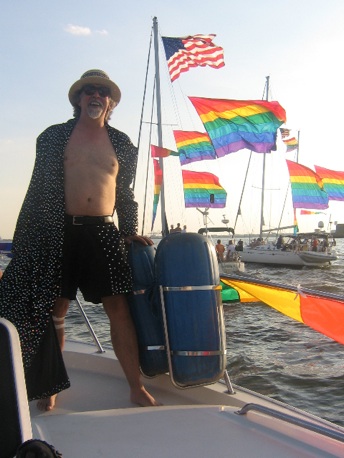
Baker summed up our phone conversation with a flourish.
“It’s a visibility tool. It’s an action. The rainbow flag. It’s not about a piece of fabric. It’s an action that people are taking. When they put the flag up on their house or wear shirts that have it on them, or whatever they’re doing when they use the rainbow flag, they’re expressing themselves and saying this is who I am.”
***
Ty Marshal is an avid sea-glass collector.
Find him on twitter @TyMarshal. Email him at [email protected]


